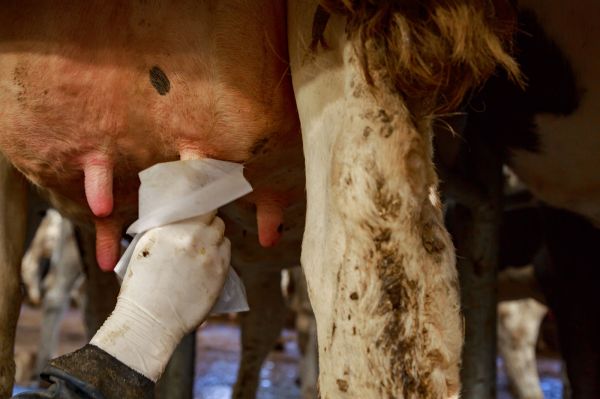Being successful with selective dry cow therapy

The aim of the legislation is to slow down and reduce the development of antimicrobial or antibiotic resistance in healthcare and veterinary medicine, and to safeguard the efficacy of antibiotics for future use in people and animals. This requires reduced and more prudent use of antimicrobials across all sectors without compromising animal health and welfare.
The new legislation requires that antimicrobials are not used routinely or to compensate for poor hygiene, inadequate animal husbandry or poor farm management. The prescribing veterinarian will need to diagnose the disease and assess the level of risk of infection to the healthy animals in the herd before proceeding with prescribing for those animals.
Dry cow mastitis management
For dairy cows, the dry period is a key part of the lactation. It allows the cow to divert essential nutrients to the rapidly developing calf foetus during last stages of the pregnancy. At the same time, it prepares the cow metabolically for the next lactation and provides a unique opportunity for the udder to recover and reset. The dry period is often also the most successful time to treat mastitis. In the past, blanket dry cow therapy was often used to achieve this, but since 2022 this is no longer the accepted protocol. Antibiotic dry cow therapy needs to be prescribed on an individual cow basis, based on herd and individual cow records that allow the prescribing veterinarian to assess the mastitis control in the herd and the need for
30-day timeframe
Decisions on the use of SDCT and accurately identifying cows that may be safely dried off using only a teat sealer without antibiotics should not be made on SCC records older than 30 days at the time of drying-off. Using the California Mastitis Test on the day of drying off can help avoid inadvertently leaving an infected quarter untreated during the dry period and improves the overall SDCT success rates.
Decisions
The free dry cow consult is available through Animal Health Ireland to make these selective dry cow therapy (SDCT) decisions. Decisions around the eligibility for antibiotic dry cow treatments will depend on:
- Herd level information and individual cow data;
- Assessment of an individual cow’s mastitis infection status based on a minimum of four, and ideally six individual somatic cell count (SCC) measurements through routine milk recording or another suitable method;
- Herd level mastitis infection rates and treatment records; and
- Milk culture and sensitivity testing.
Once antibiotic treatments for animals have been prescribed by the vet, the prescription is valid for five days from the date of issue. Treatments can be longer, as indicated by the prescribing vet, but the prescribed antibiotics will need to be drawn down within the five-day timeframe. Your herd’s vet will need to justify the medicines prescribed for your animals. The use of individual cow cell count records, preferably through routine milk recording, information from milk culture and sensitivity testing and mastitis records, will help the prescribing vet to diagnose (sub-)clinical mastitis in individual cows and provide justification for the prescribing and use of milking cow and dry cow tubes.
Success of SDCT is strongly linked with selecting the right cows, using a very clean technique for the dry-off procedure, and housing cows in hygienic conditions, especially at the very start and end of the dry period. Because of these factors, there is no one size fits all in terms of SDCT protocol on farms and within herds. Each vet will have to determine: the level of SCC and mastitis infection rate to be used as a threshold, as well as the number of cows to be dried off on a single day; the appropriate procedure to use and the indicated antibiotic treatment where needed; and what to do when subsequent treatments for unexpected mastitis cases are needed during the dry period.
Ultimately the success of SDCT is measured in the next lactation and a cell count reading within two months after calving is the best way to assess mastitis cure rates or if previously uninfected cows developed mastitis during the dry period.




